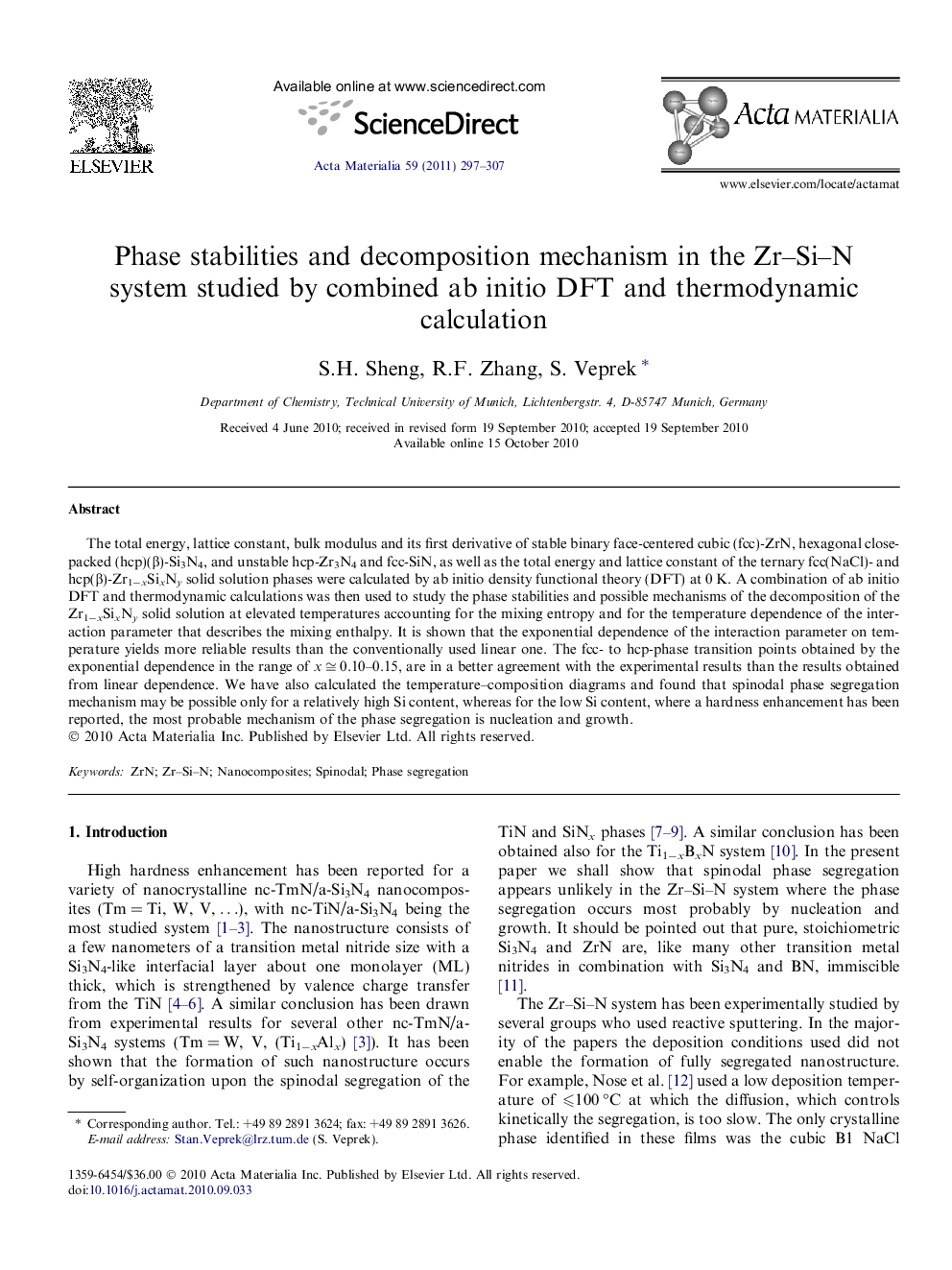| Article ID | Journal | Published Year | Pages | File Type |
|---|---|---|---|---|
| 1447844 | Acta Materialia | 2011 | 11 Pages |
The total energy, lattice constant, bulk modulus and its first derivative of stable binary face-centered cubic (fcc)-ZrN, hexagonal close-packed (hcp)(β)-Si3N4, and unstable hcp-Zr3N4 and fcc-SiN, as well as the total energy and lattice constant of the ternary fcc(NaCl)- and hcp(β)-Zr1−xSixNy solid solution phases were calculated by ab initio density functional theory (DFT) at 0 K. A combination of ab initio DFT and thermodynamic calculations was then used to study the phase stabilities and possible mechanisms of the decomposition of the Zr1−xSixNy solid solution at elevated temperatures accounting for the mixing entropy and for the temperature dependence of the interaction parameter that describes the mixing enthalpy. It is shown that the exponential dependence of the interaction parameter on temperature yields more reliable results than the conventionally used linear one. The fcc- to hcp-phase transition points obtained by the exponential dependence in the range of x ≅ 0.10–0.15, are in a better agreement with the experimental results than the results obtained from linear dependence. We have also calculated the temperature–composition diagrams and found that spinodal phase segregation mechanism may be possible only for a relatively high Si content, whereas for the low Si content, where a hardness enhancement has been reported, the most probable mechanism of the phase segregation is nucleation and growth.
